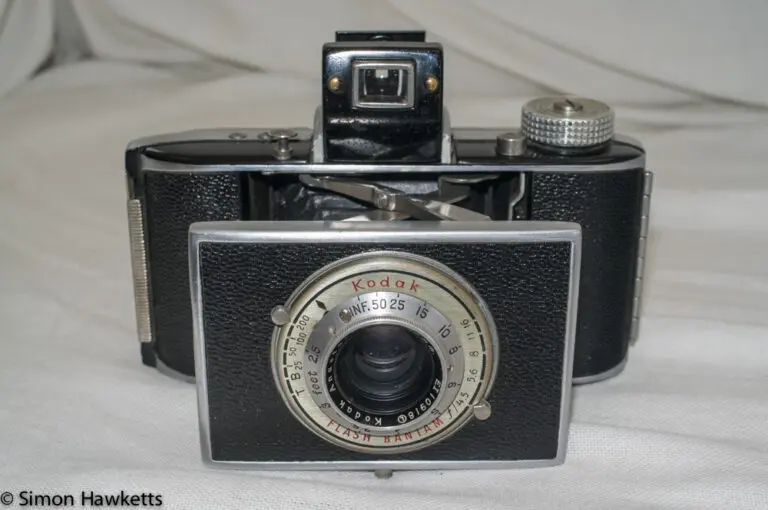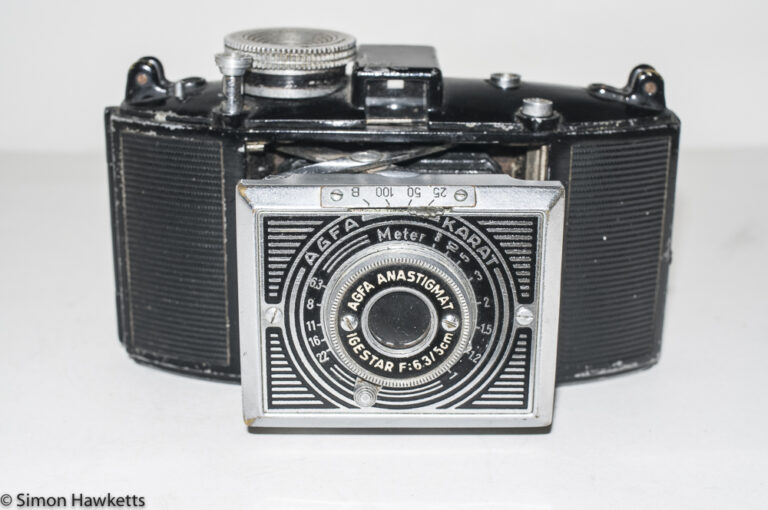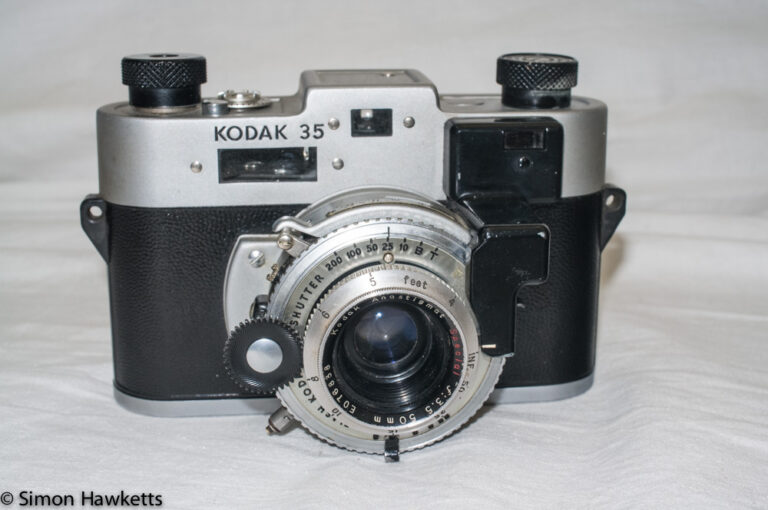The stylish and simple Kodak Art Deco Bantam
The Kodak Art Deco Bantam was one of the original two cameras in the Bantam series, and was first released to the buying public in 1935. That was the height of the Art Deco period, and one look at the camera with its black Bakelite case with moulded lines, makes it obvious how it has acquired the name ‘Art Deco’ since its release.
My Kodak Art Deco Bantam
I purchased this camera along with another Bantam, the Flash Bantam, from a seller on eBay, who was selling the two together for a very good price.
Although Bakelite can be a brittle material, I’ve been lucky with my example of the Art Deco Bantam because the case has remained intact over the course of the camera’s history with no cracks or marks other than the tendency to pick up finger marks on the smooth surface around the lens.
The bright work of the film wind knob and the cover lock however are fairly marked with a surface corrosion which may come off with a clean, and unfortunately the viewer paintwork is also pitted and bubbly.
Mechanically, the issues I’ve found are that the aperture slider, which selects which of the two aperture settings to use is very loose and would change depending on the orientation of the camera, and the screw which should be fitted in the cable release socket is missing.
Most of these issues can probably be improved with some cleaning and investigation.
Kodak Art Deco Bantam pictures.
The gallery below shows some pictures of my Art Deco Bantam as I received it.
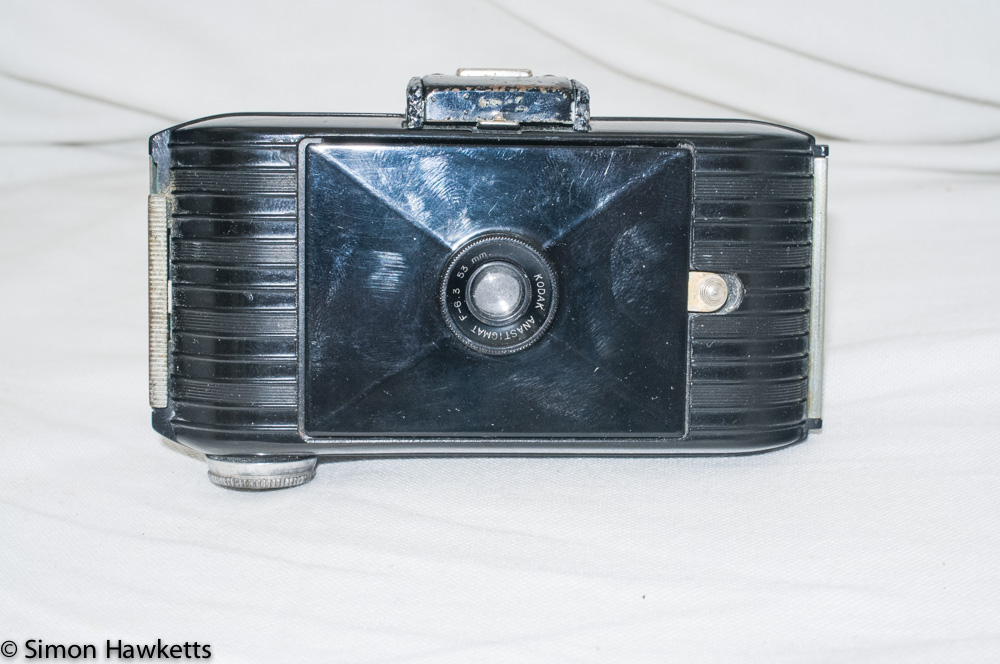
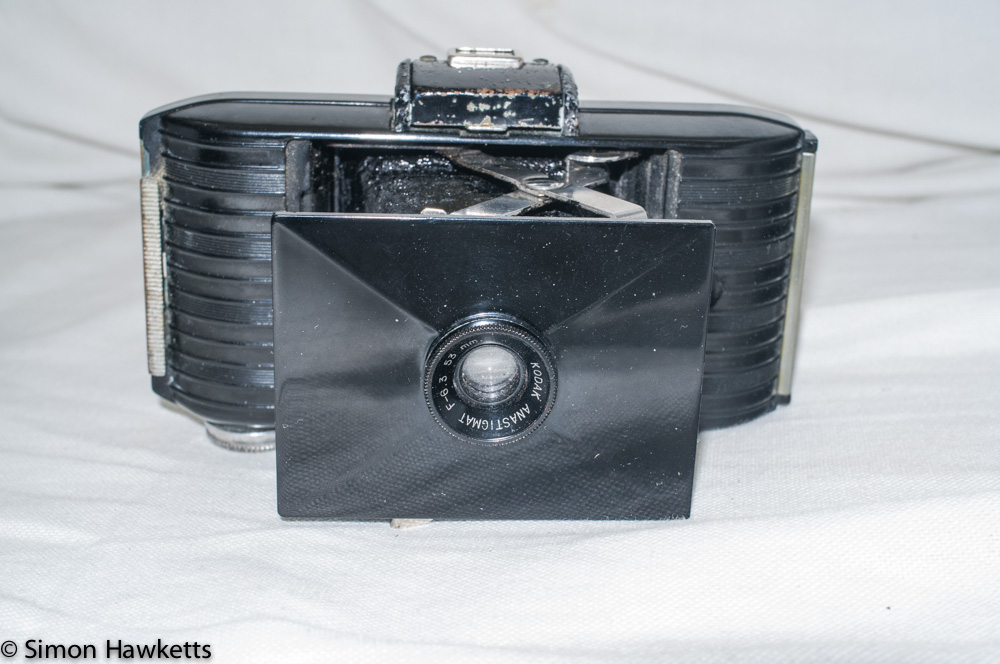
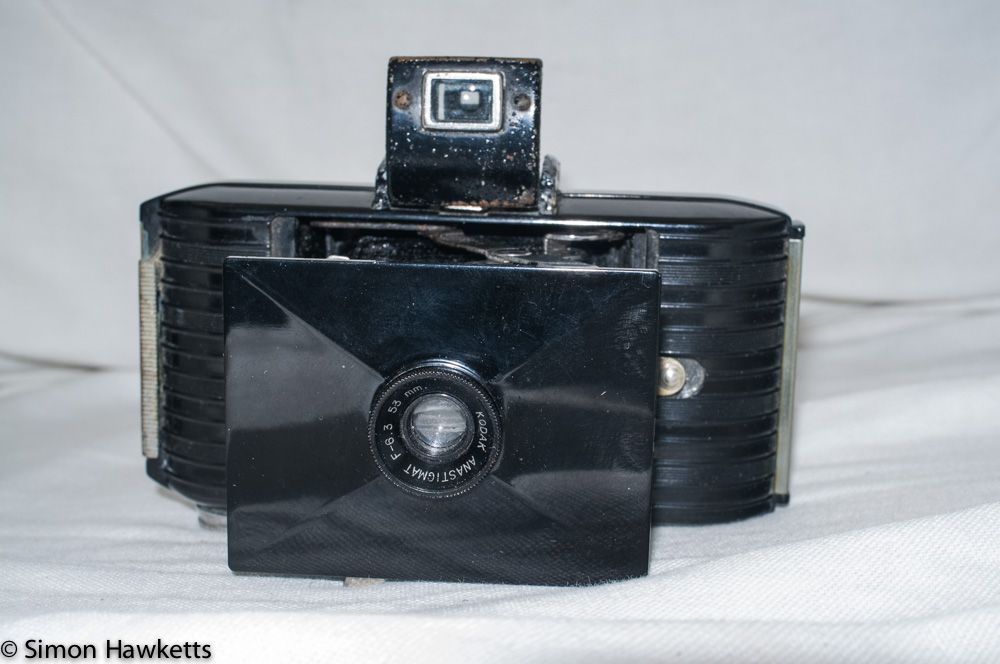
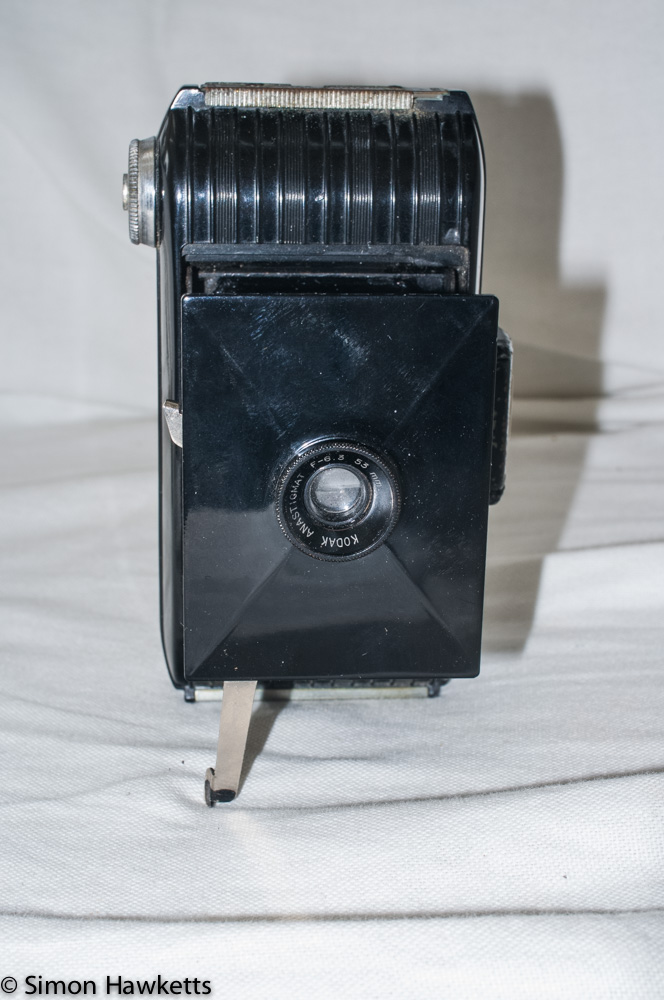

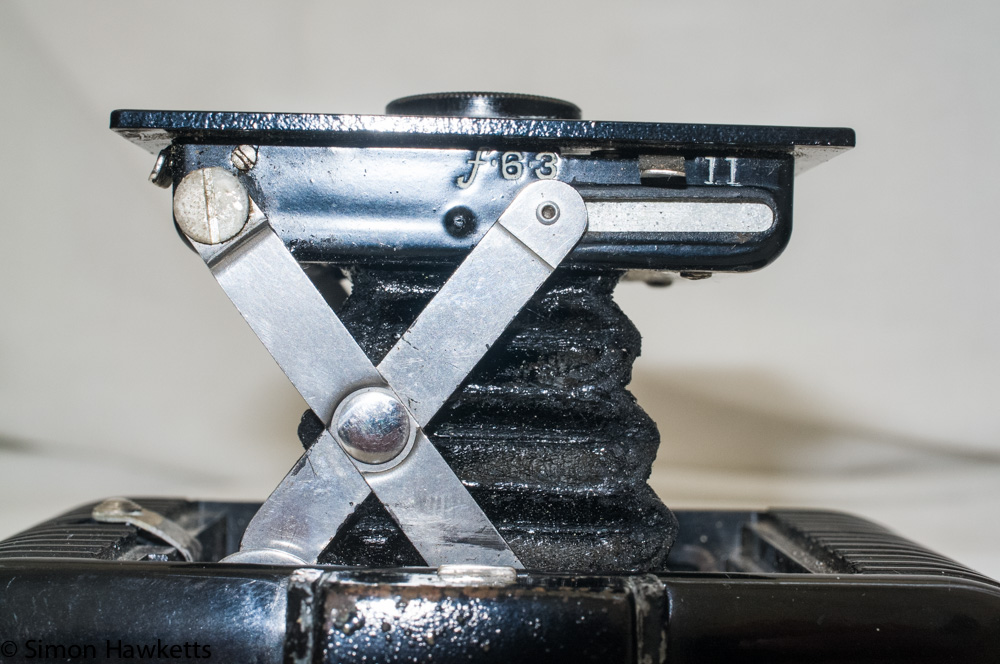
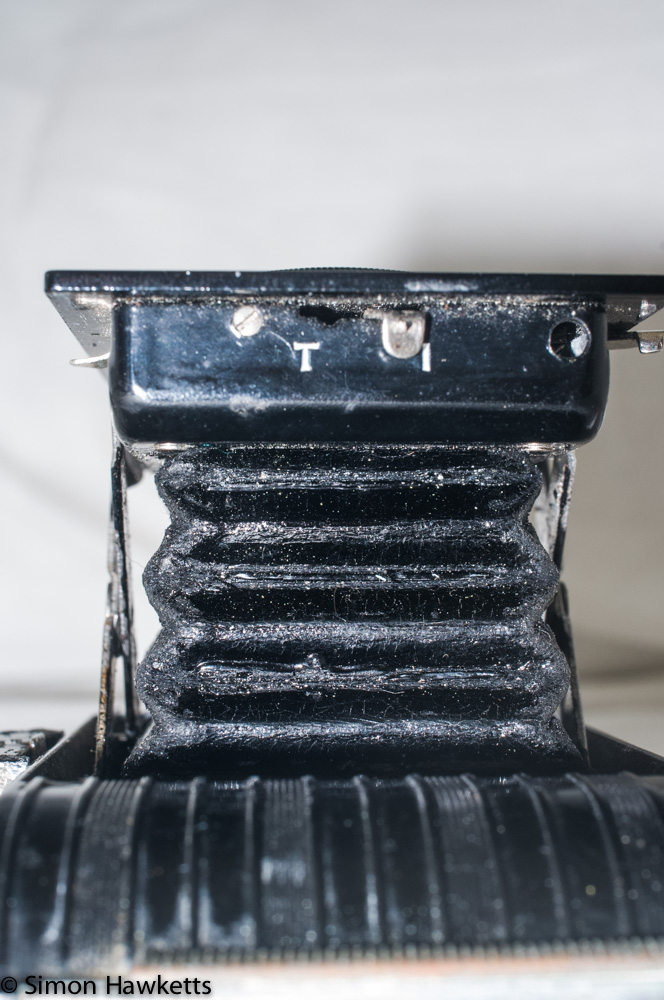
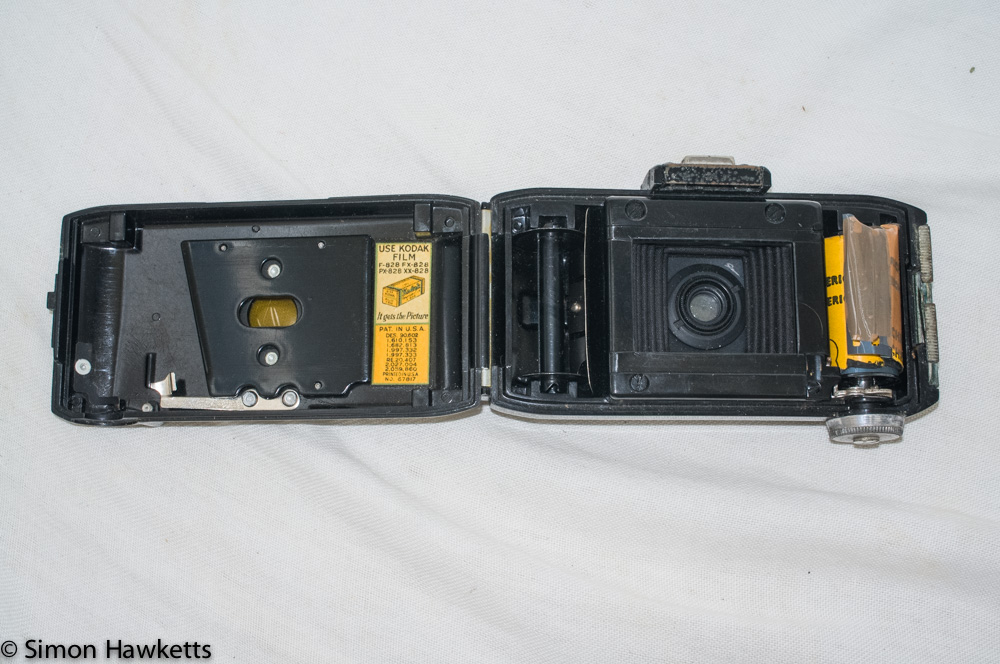
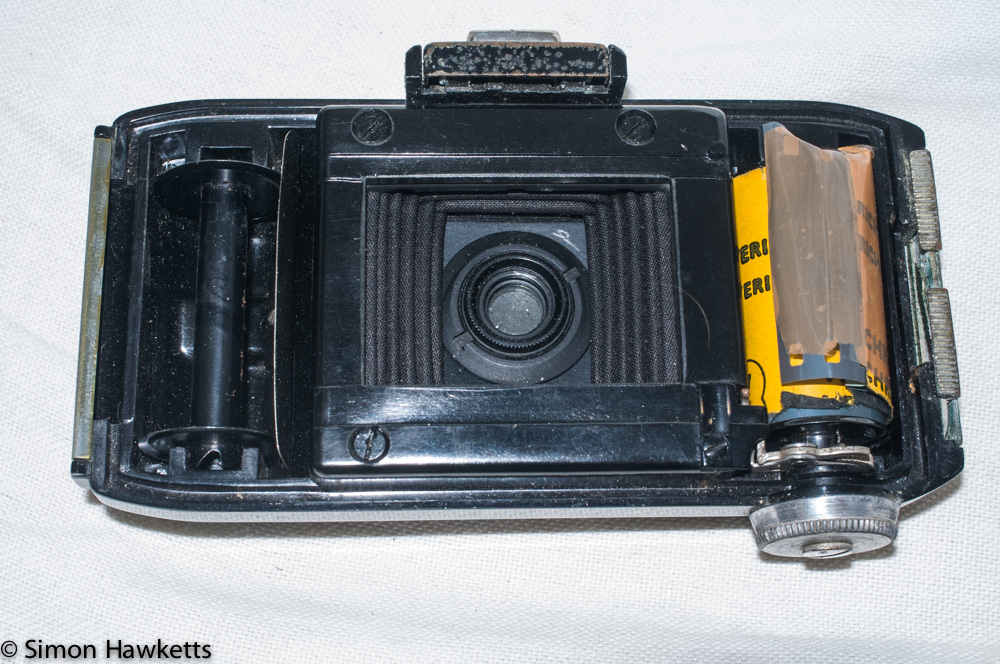
Kodak Art Deco Bantam Description
The Art Deco f/6.3 Bantam was made to be a snapshot camera and is therefore a very simple camera to use. In essence, it is the same as a box camera but made for a smaller film, and therefore easier for anyone to carry around in their pocket. This really is in keeping with the majority of the Bantam series, the exception being the Art Deco Special, which was more of an enthusiasts’ camera.
The film the camera uses is the same 828 roll film that the Flash Bantam used, and I believe this was the film all cameras in the Bantam series used until one of the later Colorsnap Bantams switched to the standard 35 mm cassette.
The Art Deco Bantam has a fixed focus lens, so the photographer didn’t need to worry about focusing, other than making sure they were not too close to the subject1 .
With the focus sorted, there were only two other elements of the picture to be considered. The exposure and the composition.
The exposure was again a simple choice because the camera has one shutter speed, and two aperture settings, so all the photographer needed to decide was if they keep the lens stopped down to f/6.3, or change it to f/11.
There is the option to use a time exposure, but since there is no tripod bush on the camera, using this setting would rely on propping the camera on a table-top and use a cable release to stop the camera moving. It can certainly be done, but for the majority of snapshot users it’s not really going to be considered.
Composition of the picture is done through a pop-up viewfinder which, with its two lenses, gives a view similar to that which will appear on the finished photo. A gentle movement of the shutter release, which is on the bottom of the extended lens, and the moment is captured.
And that’s it! There is really nothing else to taking pictures with the Kodak Art Deco Bantam, other than winding the film on to the next frame, which is done with the knob on the bottom of the camera, pressing in the button next to it to release the frame catch.
Kodak Art Deco Bantam Specifications
- Kodak Art Deco f/6.3 Bantam
- Viewfinder, folding, miniature camera made in about 1935
- Takes 828 film
- Kodak Anastigmat 53 mm lens
- Film count appears in window in the camera back
- Fixed focus
- Two aperture settings, f/6.3 and f/11
- Single shutter speed + Time setting
- Cable release socket
- Pop-up viewfinder
- Support strut for portrait, table-top shots
- Wonderful Art Deco styling
- User manual available on-line here.
My Assessment of the Art Deco Bantam
The Bantam f/6.3 Art Deco was a cheap2, unsophisticated camera made for anyone who wanted to take snapshots and capture special events in their life. I wasn’t made for serious or even beginner photographers who were going to be upgrading their camera or looking to add accessories to enhance their photographs.
So at the audience that I believe it was aimed, I would say it was successful. I suspect that millions of pictures were probably taken using the Bantam series of cameras, and a good proportion of those would have been taken using the Kodak Art Deco Bantam.
I’d even go so far as to say that I suspect some photographers who bought one of these cameras probably went on to upgrade to something more sophisticated later.
- There was a portrait attachment made that could be purchased separately to enable the camera to be used closer to the subject [↩]
- I’ve seen a contemporary advert which listed the camera for $5.75 [↩]
Discover more from Everything Vintage
Subscribe to get the latest posts sent to your email.

